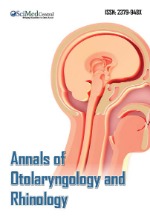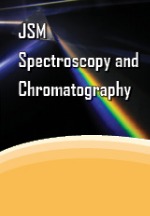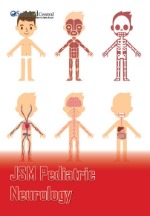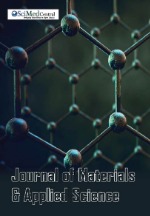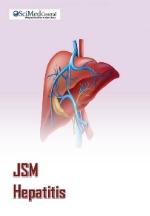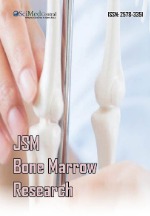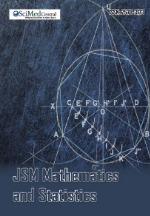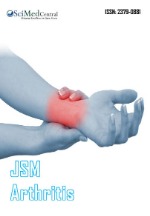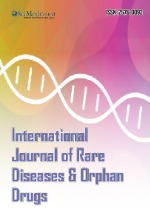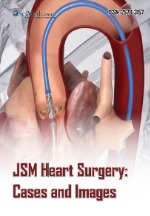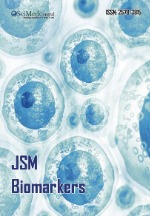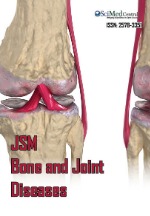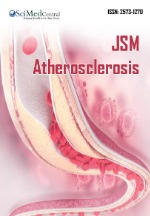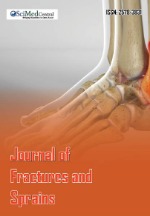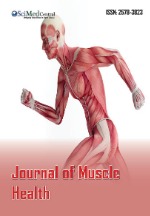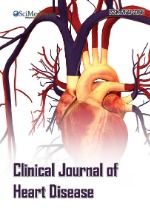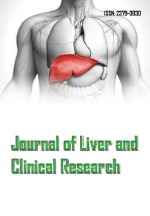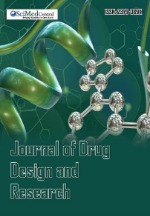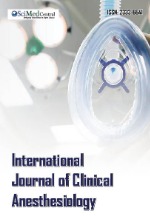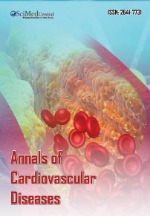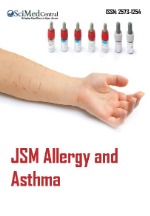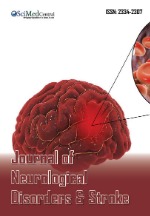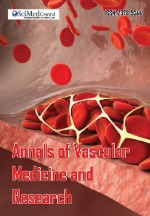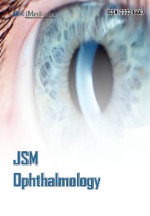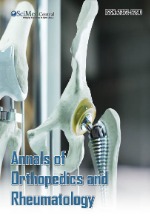Pseudoporphyria Cutaneous Tarda in a Hemodialysis Patient
- 1. Dermatology Resident, Universidad Tecnológica Equinoccial, Quito, Ecuador
- 2. Department of Dermatology, Hospital General de Calderón, Quito, Ecuador
Abstract
Pseudoporphyria is a rare condition of unknown etiology, which manifests as a photo-induced disorder that causes blistering and is distributed in photoexposed areas such as the face, neck, and the dorsal aspect of upper extremities; clinically resembling porphyric diseases, but differs in that it does not cause biochemical alterations and does not raise porphyrin levels in blood, feces and urine. It has been associated with patients requiring hemodialysis and peritoneal dialysis because they present a Uro-D enzyme (urophorfyrinogen descarboxylase) deficit, causing increased oxidative stress at the cellular level.
Keywords
• Pseudoporphyria
• Porphyria
• Dialysis
CITATION
Lisseth R, Wilma V, Carla R, Eduardo V, Manteca A, et al. (2024) Pseudoporphyria Cutaneous Tarda in a Hemodialysis Patient. J Dermatolog Clin Res 12(2): 1163.
ABBREVIATIONS
HIV: Human Immunodeficiency Virus; HCV: Human C Virus; BUN: Blood Ureic Nitrogen; Enzyme URO-D: Enzyme Decarboxylated Urobilinogen; IgA: Inmunoglobuline A; IgG: Inmunoglobuline G; IgM: Inmunoglobuline M
INTRODUCTION
Although the pathogenesis of pseudoporphyria is of unknown origin, etiological factors have been frequently associated with various conditions, among the best known are the formation of phototoxic metabolites in genetically predisposed individuals by the intake of non-steroidal anti-inflammatory drugs, diuretics, photosensitizing drugs, antibiotics, retinoids, hormone replacement therapies, pathologies such as HIV, HCV, Sjögren’s syndrome, lupus erythematosus and especially in people suffering from chronic kidney disease who receive haemodialysis or peritoneal dialysis, among others. It can occur at any age and it is more common in women [1].
Although the clinical features are similar to cutaneous porphyrias such as edema, which is usually mild in photoexposed areas, there is also the formation of blisters (histologically subdermal), atrophic scars, millimetric cysts, sclerodermiform changes and skin fragility; it differs especially because at the biochemical level there is an absence of abnormalities in porphyrin metabolism [2].
The present case report mentions a patient who had recurrent blisters in photoexposed areas and who had a history of three weekly hemodialysis, where the importance lies in determining an uncommon diagnosis such as pseudoporphyria. The patient in the clinical case presented gave her informed consent for the publication of her medical history and photographs, maintaining confidentiality.
CASE PRESENTATION
A 45-year-old female patient with a history of arterial hypertension, chronic kidney disease on three-weekly hemodialysis treatment; for which she was taking: valsartan, calcium carbonate, ferrous sulphate, B complex, vitamin C and folic acid.
The patient reported that approximately 5 months ago, after changing dialysis center, she presented localized lesions in areas of photo exposure (face, neckline, arms, hands) characterized by vesicles and painful blisters that subsequently left hyperpigmented spots and scars.
Physical examination revealed localized skin lesions in areas of photo exposure characterized by tense, Nikolsky-negative, serous vesicles and blisters, predominantly on the back of the hands, as well as hypopigmented and hyperpigmented spots, scabs and scars in areas of previous blistering.
Laboratory tests showed leucocytes 6320, neutrophils 60%, hemoglobin 12 g/dL, hematocrit 34%, MCV 90 fl, glucose 126 mg/dL, urea 173 mg/dL, creatinine 4 mg/dL, total cholesterol 224, total calcium 8.26, BUN 81 mg/dL.
Porphyrins measured in blood were within the normal range; porphyrins were not measured in urine because the patient did not have diuresis, nor in feces as the sample had to be sent abroad for processing and because of the cost.
Histopathological examination of an incisional biopsy of a blister on the back of the hand revealed a subepidermal vesicle with erythrocytes in the lumen of the vessels with thickened walls, prominent papillae extending irregularly at the base of the blister, occasional perivascular mononuclear cells; the epidermis had an area of hyperkeratosis with micro-abscesses and occasional eosinophilic bodies compatible with a histological pattern of subepidermal vesicular dermatitis. An immunofluorescence study could not be performed due to limited access to this test by the health network. The patient’s clinical manifestations together with the history of a change of dialysis center, absence of porphyrins in the blood and histopathological study led to a diagnosis of pseudoporphyria associated with hemodialysis.
The patient received treatment with N-acetyl cysteine orally at 1200mg per day, photoprotection measures, and during follow-up there was evidence of a decrease in lesions, pending change of dialysis center (Figures 1-3).
Figure 1: Crusty lesions, scars, hyperpigmented patches on the face.
Figure 2: Serous and crusted blistering lesions and scarring on the dorsum of the hand.
Figure 3: Blister on lateral region of the fifth finger of right hand.
DISCUSSION
Pseudoporphyria is a rare cutaneous pathology with several causes such as non-steroidal anti-inflammatory drugs (ibuprofen, ketoprofen, oxaprozin, naproxen), diuretics (chlorthalidone, furosemide), antibiotics (tetracyclines), retinoids (isotetrinoin), oral contraceptives, pyridoxine.
The clinical and histopathological picture of pseudoporphyria and porphyria cutanea tarda are identical, the difference lies in the fact that the former does not present alterations in porphyrins in blood, plasma, feces or in the determination of the Uro-D enzyme. The histopathological study is of vital importance and can present subepidermal blisters with dermal papillae with a scalloped appearance. Direct immunofluorescence studies reveal granular deposits of IgG and C3 in the dermoepidermal junction and vessels of the superficial dermis as well as IgM and IgA. In hemodialysis patients, decreased porphyrin clearance and azotemia reduce the activity of the enzyme URO-D (decarboxylated urobilinogen), the use of diuretics, aluminium hydroxide, hemosiderosis, polyvinyl used in hemodialysis tubing; the susceptibility to oxygen free radicals with decreased glutathione levels, so in several case reports N-acetyl cysteine has been used for its ability to increase glutathione and reduce oxidative stress. The causative agent should be identified, suspended and fotoprotective measures should be taken (Figures 4,5) [3-10].
Figure 4: Subepidermal blister (HE stain), courtesy of Dr. Pedro León, pathologist.
Figure 5: Thickening of the superficial blood vessels. Courtesy of Dr. Pedro León, pathologist
CONCLUSION
Hemodialysis associated pseudoporphyria, being a rare pathology, should be considered as a differential diagnosis of the different blistering diseases, and also taking into account the intake of drugs.
CONFLICTS OF INTEREST
The authors declare no conflicts of interest.
REFERENCES
1. Del Cisne J. Dermatosis ampollar en paciente con enfermedad renal crónica en hemodiálisis: Reporte de un caso. Archivos Venezolanos de Farmacología y Terapéutica. 2019; 38: 27-30.
2. Capote E. Porfiria cutánea tarda vs pseudoporfiria cutánea tarda en un paciente en hemodiálisis. Presentación de un Caso. Medisur. 2020; 18: 137-142.
3. Pelaez K, Sanchez G. Pseudoporfiria asociada a hemodiálisis. Dermatol PERU. 2014; 24: 259-261.
5. Abril D, Estrada AP, Trujillo MdeLM. Pseudoporfiria cutánea: Informe de un caso y revisión de la literatura. Dermatología Cosmética, Médica y Quirúrgica. 2014; 2: 111 - 113.
10. Barco L. Pseudoporfiria en paciente dializada. Actas Dermosifiliogr. 2004; 95: 522-524.







